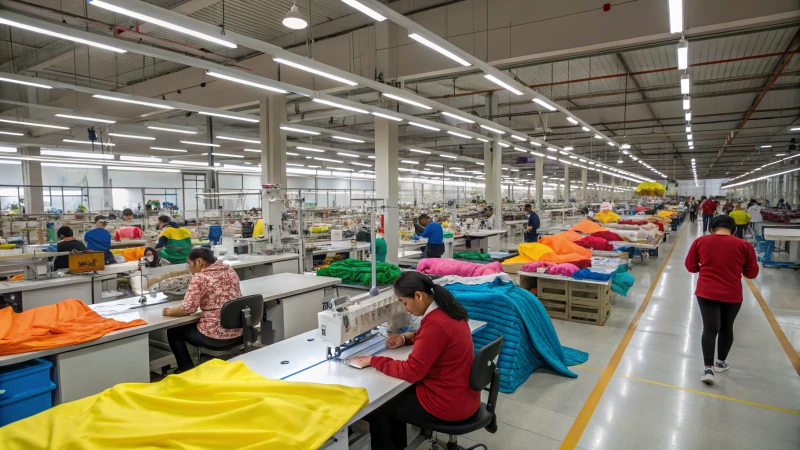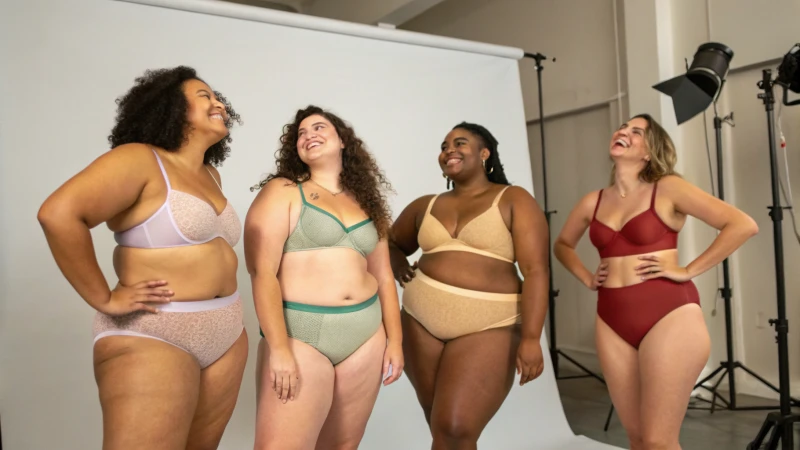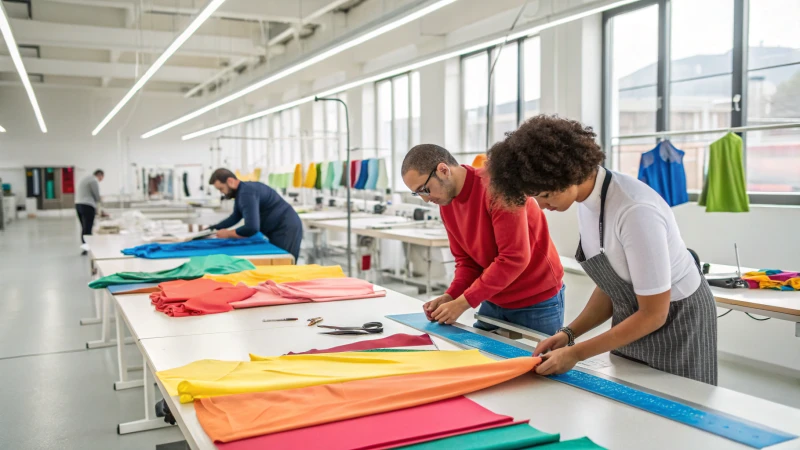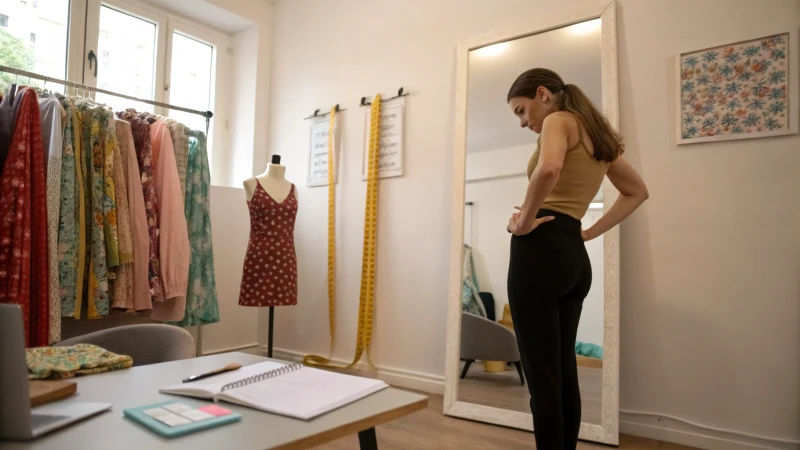
Have you ever imagined giving your underwear line a personal flair? Unique logos probably help your brand shine in a crowd.
To craft unique logos on custom underwear, think about using heat transfer, embroidery, silicone printing or screen printing. Each technique brings different advantages. Heat transfer provides bright colors, while embroidery gives a textured feel. Silicone printing offers durability and screen printing is budget-friendly. These methods suit different design requirements and financial plans.
Exploring the world of customization, techniques surprised me with their unique offerings. Heat transfer stands out for detailed designs full of vibrant colors. Embroidery allows for luxury with a rich texture that feels premium. Silicone printing surprised me with its soft yet durable 3D effect on my designs.
Screen printing worked wonders for bold colors in large quantities at a lower cost. Different methods fit varying brand visions and product targets. Techniques astonishingly turn simple fabric into a canvas of creativity and style. It really is amazing.
Embroidery is the cheapest method for logo customization.False
Embroidery is often more expensive due to its durability and texture.
Silicone printing offers a 3D effect for logos on underwear.True
Silicone printing provides a raised, textured look, enhancing logo visibility.
Why Choose Heat Transfer for Logo Customization?
Do you ever think about why heat transfer transforms logo customization? Let's dive in and discover its bright advantages!
Heat transfer works well for logo customization. It offers vibrant colors and detailed designs. This method suits many types of fabrics. Durability is another key advantage. Small batches become affordable with it. Production happens quickly. Perfect for complex designs on clothing.

Bright Color Display
The first time I saw a heat transfer logo on a bright red T-shirt, I felt amazed. The colors sparkled like a sunset on fabric. Embroidery1 often limits color choices, but heat transfer lets your boldest designs shine with all the colors you imagine.
Fine Detailing
If you love detailed things, the precision of heat transfer will impress you. An intricate logo with tiny text seemed impossible to recreate. Yet, with heat transfer, every detail appeared sharp and clear. Screen printing2 struggles with such fine designs.
| Feature | Heat Transfer | Screen Printing |
|---|---|---|
| Detail Precision | High | Medium |
| Color Range | Wide | Limited |
Adaptability on Fabrics
Printing your logo on nearly any fabric is a wonderful freedom. That's the beauty of heat transfer. From soft cotton tees to sturdy polyester jerseys, this method adapts well. Whether it's a polyester3 sports jersey or a cotton T-shirt, this versatility makes it an ideal choice for diverse apparel ranges.
Strength and Long Life
Knowing your logo stays intact after many washes offers great peace. Initially, doubts lingered, but after seeing heat transfer designs endure wash after wash, my conviction grew. The design bonds with fabric permanently compared to heat-seal printing4, which might fade faster.
Cost-Effective for Small Orders
When starting or managing small orders, every penny is vital. Heat transfer has saved money while keeping quality high. Avoiding pricey setups and large orders keeps overheads low and remains flexible and efficient.
Fast Turnaround
Sometimes urgent needs arise. Last-minute event preparation demands quick action. Heat transfer's simple process delivers excellent results swiftly compared to jacquard woven labels5, which take much longer to produce for quick promos or restocks.
Heat transfer offers vibrant color reproduction.True
Heat transfer can replicate complex designs with numerous hues and gradients.
Screen printing provides better detail precision than heat transfer.False
Heat transfer captures fine lines and small text more effectively than screen printing.
How Does Embroidery Enhance Underwear Branding?
Feel the luxury every time you wear your favorite underwear. It's about more than comfort. It is an experience. Embroidery really turns this experience into something special. Truly remarkable.
Embroidery adds a high-quality touch to underwear branding. It offers chances for personalized designs. The feel of the fabric changes. It becomes special. The product looks better. It becomes both memorable and unique.

The Role of Embroidery in Brand Perception
The first time I saw an embroidered logo on underwear, it felt like viewing a masterpiece. That small touch showed the brand's great focus on quality and style. Customers often link such detailed work with high-class items. This helps a brand shine in a crowded field.
Customization Opportunities
Embroidery offers many ways to personalize products. Picture offering your customers something special just for them. This unique touch builds loyalty and attracts those seeking distinctiveness. Many luxury brands use embroidery, so their logos become not just seen but remembered. Very memorable.
Durability and Longevity
Fading designs after a few washes bother me a lot. Embroidery avoids this problem. It lasts for years, much like a favorite pair of jeans you always wear. This strength assures customers of good quality, which boosts your brand's image.
Textural Appeal
Touching a well-embroidered logo gives a satisfying feeling. It adds a sensory layer to the product, making it seem more luxurious. Such tactile attraction can change the game, capturing the premium quality customers desire.
Cost Considerations
Embroidery might seem costly at first. Yet, it's worth thinking about the extra value it offers. If luxury is your target market, the expense could definitely be worthwhile. Many customers might pay more for that special touch.
Comparison Table of Branding Techniques
| Technique | Durability | Texture | Cost | Ideal For |
|---|---|---|---|---|
| Embroidery | High | Raised | Moderate | Luxury, unique designs |
| Heat Transfer | Moderate | Flat | Low | Complex, vibrant designs |
| Screen Printing | High | Flat | Low | Bulk production |
| Jacquard Woven | High | Textured | High | Durable, high-end products |
Conclusion
Embroidery isn't just a simple design choice; it's a smart branding move that benefits over time. It lifts your brand's image through its unique charm and long-lasting nature—a wise choice indeed. Higher initial costs might appear daunting, but the high return with better customer connection and loyalty is huge. For more on how embroidery might change your brand, explore industry insights6.
Embroidery is more durable than screen printing.True
Embroidery maintains its appearance after multiple washes, unlike screen printing.
Embroidery is cheaper than heat transfer methods.False
Embroidery is costlier due to its premium and detailed nature compared to heat transfer.
Why is Silicone Printing Perfect for Underwear Designs?
Ever thought about why silicone printing attracts attention for underwear designs? This method brings more than just fashion. It truly revolutionizes the industry.
Silicone printing shines in underwear designs. It is very strong and bends easily. Colors stay bright even after many washes. This method keeps underwear comfortable and attractive. Repeated washing doesn't dull the colors. The underwear looks great for a long time.

Understanding Silicone Printing
My first encounter with silicone printing left me really amazed. Silicone-based inks moved easily onto fabric, creating prints that stood up to tough use and many washes. The ink seemed to become part of the fabric! Designs with these inks stretch without ugly cracks. Picture wearing something sturdy that also stays bright and lovely over time.
Silicone printing involves using silicone-based inks to transfer designs onto fabric. This method creates a durable print7 that stands up to wear and washing, making it perfect for everyday clothing like underwear. Unlike traditional inks, silicone inks are flexible, allowing the fabric to stretch without cracking.
Benefits of Silicone Printing
- Durability: Prints last for a very long time, enduring many washes without falling apart.
- Flexibility: Great for stretchy fabrics, silicone printing moves with the material for comfort with no design sacrifices.
- Vibrant Colors: Silicone inks keep their brightness, making designs stay fresh and interesting.
| Feature | Silicone Printing | Traditional Printing |
|---|---|---|
| Durability | High | Moderate |
| Flexibility | Excellent | Poor |
| Color Retention | Superior | Average |
Applications in Underwear Design
Silicone printing really changes the game in underwear design. Feeling a finished product was like holding art that was also very useful. The ink's stretchiness matches well with underwear fabrics, giving a soft touch that's gentle on skin. Exciting designs are possible without giving up comfort.
For underwear designers, silicone printing offers the ability to create intricate designs8 that are both aesthetically pleasing and functional. The ink's natural elasticity aligns well with materials used in underwear, providing a smooth finish that does not irritate the skin.
Comparing Printing Techniques
Traditional ways like screen printing and embroidery are good, but silicone printing stands out for softness and stretch. It fits well with clothing where comfort and style are essential.
While techniques like screen printing and embroidery have their place, silicone printing excels in areas requiring softness and elasticity. This makes it particularly suited for garments that require comfort and style in equal measure.
Explore how silicone printing compares with other methods here9. Embrace this adaptable technique in your design journey and notice the difference.
Silicone prints crack after multiple washes.False
Silicone prints are durable and withstand numerous washes without cracking.
Silicone inks retain color better than traditional inks.True
Silicone inks maintain vibrant colors more effectively than traditional inks.
Which Technique is Best for Bulk Production of Custom Logos?
Picking the best method for creating many custom logos feels confusing. This choice hugely impacts your brand’s quality and costs. Deciding smartly is crucial.
Screen printing stands out as the top method for producing many custom logos. The process is cost-effective, delivering vibrant and durable prints. This technique suits large orders. Businesses find both quality and savings in this method.

Understanding Bulk Production Methods
Custom logo production requires careful consideration of the available techniques to balance quality and cost. Here’s a detailed look at some popular methods.
Screen Printing
Screen printing is widely favored for its ability to produce vibrant colors with exceptional durability. It’s particularly cost-effective when dealing with large quantities. This technique involves pushing ink through a mesh screen onto the fabric, creating a bold and lasting impression.
The first screen printing I did was thrilling. Seeing bold colors come alive was amazing! This method works well for simple designs with few colors. A comparison of techniques10 shows that screen printing is ideal for simple designs with fewer colors.
Heat Transfer
Heat transfer allows for detailed designs with intricate patterns. Using heat and pressure, the design is transferred from paper to fabric, making it suitable for smaller batches or prototypes.
When I needed detailed designs, I tried heat transfer. It's great for making small amounts or samples. However, it may not be as durable as screen printing for long-term use. For vibrant and complex designs, heat transfer options11 offer flexibility.
Embroidery
Embroidery adds a premium, textured feel to logos. It’s perfect for simpler designs but can become costly when used on larger scales due to the labor-intensive process.
I once spent extra on embroidery for a special project and the rich texture gave a really classy look. Absolutely worth it when a luxurious appearance is needed. Embroidery is best suited for high-end products where texture and luxurious appeal12 are desired.
Silicone Printing
Silicone printing provides a soft yet strong finish with a 3D effect. It’s excellent for sports apparel due to its flexibility and resilience.
Silicone methods brought a fresh look to my products, making them unique in any setting. For an innovative look, consider silicone techniques13 that enhance product appeal.
Factors Influencing Technique Choice
- Design Simplicity: Simple logos benefit from screen printing, while complex designs may require heat transfer.
- Spending Limits: Screen printing offers the best value for bulk orders, reducing overall costs.
- Need for Strength: Both embroidery and silicone printing provide excellent durability but come at a higher price point.
Knowing these points helped me select the right ways to create custom logos. Whether you're new or improving your method, these tips can help you find the best solution for your custom logo production14.
Screen printing is the most cost-effective for large orders.True
Screen printing is cost-effective for bulk due to its efficiency and lower ink costs.
Embroidery is the cheapest option for bulk logo production.False
Embroidery is labor-intensive and costly, especially for large-scale production.
Conclusion
Explore various techniques for customizing underwear logos, including heat transfer, embroidery, silicone printing, and screen printing, each offering unique benefits for branding and design.
Discover how embroidery offers a premium look and textured feel that's distinct from heat transfer methods. ↩
Understand the differences between screen printing and heat transfer in terms of detail precision and color range. ↩
Learn how heat transfer effectively adheres to polyester fabrics without compromising design quality. ↩
Explore why heat-seal printing may not be as durable as heat transfer in certain applications. ↩
Find out why jacquard woven labels generally require longer production times compared to heat transfer. ↩
Provides insight into how embroidery can set brands apart in competitive markets. ↩
Discover how silicone printing enhances textile durability and offers unique design possibilities. ↩
Learn about the detailed design capabilities of silicone printing and how it can elevate garment aesthetics. ↩
Understand the differences between silicone and screen printing to make informed design choices. ↩
Discover why screen printing is favored over other methods for bulk production. ↩
Explore the benefits and limitations of heat transfer printing. ↩
Learn why embroidery might be preferred for luxury branding. ↩
Understand the unique benefits of silicone printing. ↩
Find out which methods excel in producing custom logos efficiently. ↩






